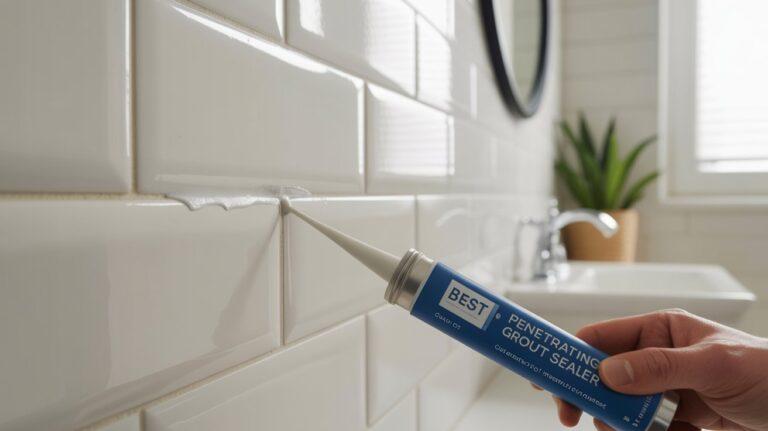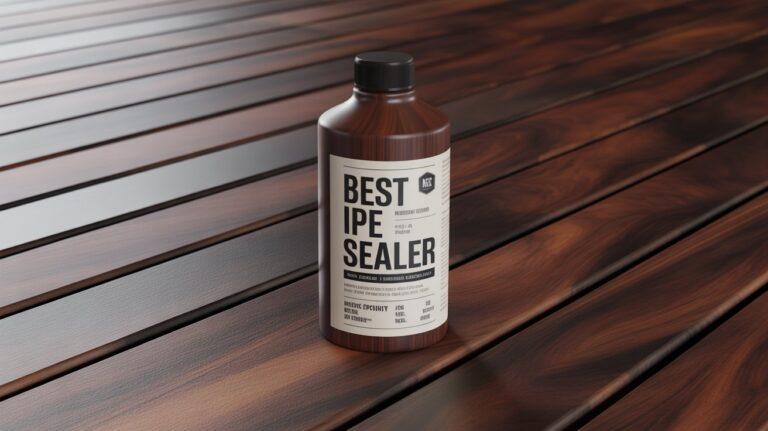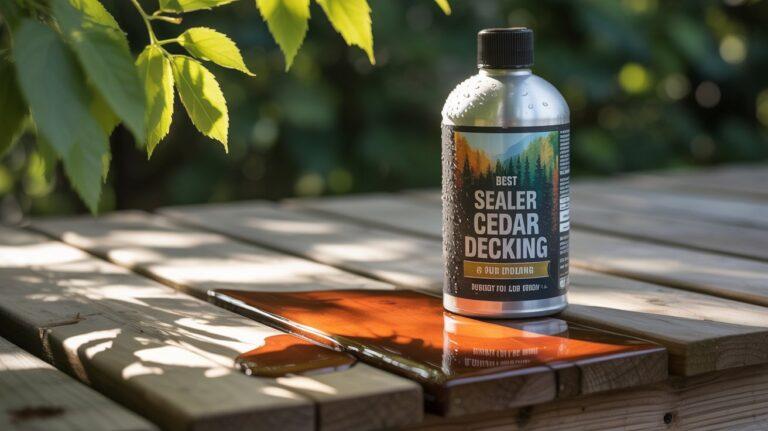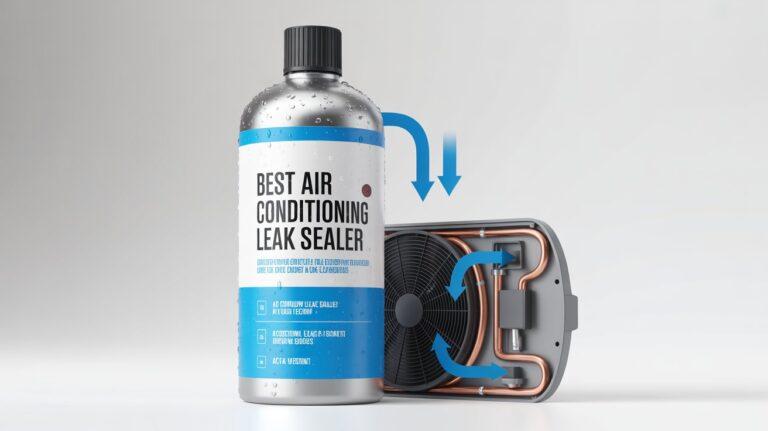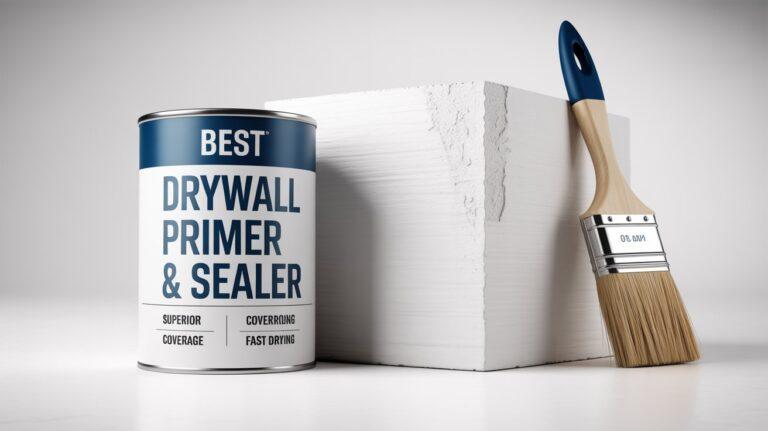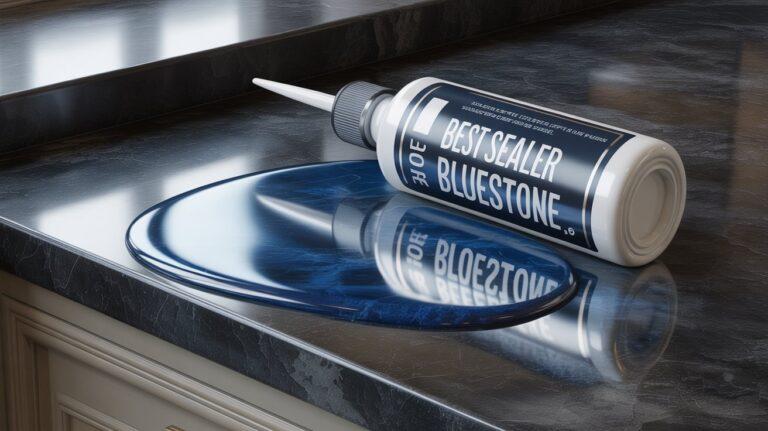The Ultimate Debate: Do You Put Gasket Sealer on Both Sides?

Gasket sealers play a crucial role in ensuring proper sealing between two mating surfaces, preventing leaks, and maintaining the integrity of the components they are used with. When applying gasket sealers, one common question arises: Do you put gasket sealer on both sides of a gasket? This article will explore the factors to consider, the pros and cons, and the proper application techniques to help you make an informed decision.
What is a Gasket Sealer?
A gasket sealer is a compound applied to one or both sides of a gasket to enhance its sealing capabilities. It is typically used in conjunction with gaskets made of materials such as rubber, cork, or paper. The sealer forms a flexible and durable barrier that fills in gaps and imperfections, preventing the escape of fluids, gases, or other substances.
Importance of Using Gasket Sealers
Gasket sealers are essential for several reasons:
i) Enhanced Sealing
Gasket sealers provide additional protection by filling in gaps and imperfections, ensuring a more effective seal between the mating surfaces.
ii) Leak Prevention
By creating a tight seal, gasket sealers help prevent leaks that could lead to costly repairs, equipment damage, or safety hazards.
iii) Vibration and Impact Resistance
The flexible nature of gasket sealers allows them to withstand vibrations and impacts, maintaining the integrity of the seal even under challenging conditions.
iv) Temperature and Chemical Resistance
Many gasket sealers are designed to withstand various temperatures and resist exposure to various chemicals, ensuring long-term sealing performance.
Understanding the Two Sides of a Gasket
To determine whether you should apply gasket sealer on both sides of a gasket, it’s important to understand the different sides of a gasket and their functions.
The Top Side of a Gasket
The top side of a gasket is the surface that comes into contact with the mating surface of the sealed components. Its primary function is to create a tight seal and prevent fluid or gas leakage. This side of the gasket is typically in direct contact with the sealer during application.
The Bottom Side of a Gasket
The bottom side of a gasket is the surface that faces away from the mating surface. The side usually comes into contact with the other component or the surface where the gasket is seated. While this side does not directly interact with the gasket sealer, it still plays a vital role in sealing.
Should You Put Gasket Sealer on Both Sides?
The decision to apply gasket sealer on both sides of a gasket depends on various factors. Let’s explore the pros and cons to help you make an informed choice.
Pros of applying gasket sealer on both sides
i) Enhanced sealing effectiveness
Applying a gasket sealer on both sides of a gasket can improve the sealing effectiveness by filling in irregularities on both the top and bottom sides, creating a more secure and reliable seal.
ii) Additional leak protection
The double-sided application protects against potential leaks, especially when the mating surfaces are prone to imperfections or unevenness.
iii) Better resistance to vibration and impact
When applied on both sides, a gasket sealer helps absorb and distribute vibrations and impacts more effectively, minimizing the risk of seal failure.
Cons of applying gasket sealer on both sides
i) Excessive Sealer Use
Applying gasket sealer on both sides may lead to product overuse, which could be unnecessary and potentially messy. It can also increase the difficulty of disassembling components in the future.
ii) Compatibility Issues
Some gasket materials or specific applications may not be suitable for double-sided sealer applications. It is essential to consider the manufacturer’s recommendations and guidelines for the particular gasket and sealer used.
Factors to Consider Before Applying Gasket Sealer
Before deciding to apply gasket sealer on both sides, consider the following factors:
i) Gasket Material
Different gasket materials have varying porosities and levels of compressibility. Some gaskets may require additional sealing properties provided by a gasket sealer, while others may not benefit from it. Consider the material composition of the gasket and its compatibility with the sealer.
ii) Manufacturer Recommendations
Manufacturers often provide guidelines and recommendations for the application of gasket sealers. Check the product specifications and instructions to determine whether they recommend applying the sealer on both sides or only on the top side.
iii) Application Requirements
Consider the specific requirements of the application. Factors such as operating temperature, chemical exposure, and surface conditions can influence the need for double-sided sealer application. Evaluate the potential risks and benefits based on the specific application context.
Proper Application of Gasket Sealer
When applying gasket sealer, following proper techniques is essential to ensure optimal results. Here are the key steps to consider:
i) Cleaning and Preparation
Thoroughly clean the mating surfaces and remove debris, oil, or old gasket material. Ensure the surfaces are dry and free from contaminants to promote effective adhesion of the gasket sealer.
ii) Applying Gasket Sealer
Based on your evaluation and considering the manufacturer’s recommendations, apply the gasket sealer on the top side of the gasket. Use a thin, even layer to cover the surface uniformly. Use caution to avoid excess sealer application, especially if you decide not to apply it on the bottom side.
iii) Curing and Drying Time
Allow the gasket sealer to cure and dry according to the manufacturer’s instructions. This step is crucial for the sealer to achieve its optimal sealing properties. Make sure to assemble the components early enough, as it may compromise the effectiveness of the seal.
Common Misconceptions About Gasket Sealer Application
There are a few misconceptions regarding the application of gasket sealers that should be addressed:
i) Sealer as a substitute for a gasket
Gasket sealers should not be used as a replacement for gaskets. They are designed to enhance the sealing properties of gaskets, not to create seals on their own.
ii) Excessive sealer for better sealing
Using excessive gasket sealers does not necessarily provide better sealing performance. It can lead to messy applications, difficulty disassembling components, and potential seal failure.
Some Popular Brands of Gasket Sealers
Here are some popular brands and specific gasket sealers that are commonly used for sealing both sides:
1. Permatex Ultra Black Gasket Maker
2. Loctite 518 Gasket Sealant
3. Three Bond 1211 Liquid Gasket
4. RTV Silicone Gasket Maker
5. Three Bond 1217H Silicone Liquid Gasket
6. Permatex Aviation Form-A-Gasket No. 3 Sealant
7. Loctite 515 Gasket Eliminator Flange Sealant
8. Three Bond 1104 Gasket Maker
9. Permatex The Right Stuff Gasket Maker
10. Loctite 587 Blue High-Performance RTV Silicone Gasket Maker
One popular and versatile gasket sealer often considered an all-in-one solution for various applications is the Permatex Ultra Black Gasket Maker.
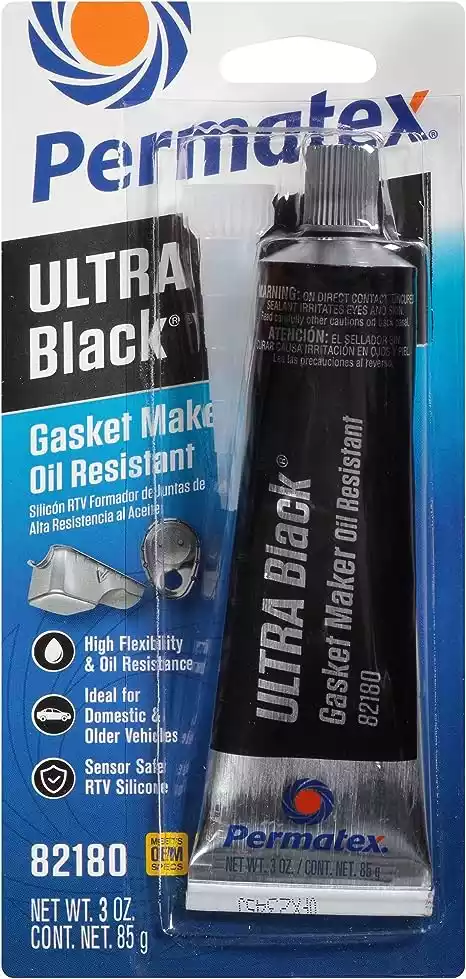
Permatex Ultra Black Gasket Maker
Permatex Ultra Black Gasket Maker is a silicone-based gasket sealer that offers excellent flexibility, temperature, and chemical resistance. It is designed to create reliable seals on both sides of a gasket and can be used in automotive, marine, industrial, and other sealing applications.
This gasket sealer provides a durable and long-lasting seal, even in high-temperature environments. It effectively fills gaps and irregularities, preventing fluid or gas leakage and providing excellent resistance to vibration and impact.
Permatex Ultra Black Gasket Maker is easy to apply, adheres well to various surfaces, and cures quickly to form a flexible, rubber-like seal. Its versatile nature makes it suitable for sealing various gasket materials and mating surfaces.
When searching for a single product that can handle multiple sealing tasks, Permatex Ultra Black Gasket Maker is a reliable choice that combines the necessary qualities for most sealing applications.
Remember to carefully follow the manufacturer’s instructions and guidelines for optimal results when using any gasket sealer.
Pros of Permatex Ultra Black Gasket Maker:
i) Versatility
Permatex Ultra Black Gasket Maker is versatile for various sealing applications. It can be used on both sides of a gasket and adheres well to various surfaces.
ii) Temperature Resistance
This gasket maker offers excellent resistance to high temperatures, making it suitable for automotive and industrial applications where heat resistance is crucial.
iii) Chemical Resistance
It provides good resistance to various chemicals, oils, and fluids commonly encountered in automotive and industrial environments.
iv) Flexible and Durable Seal
Permatex Ultra Black Gasket Maker creates a flexible and durable seal that can withstand vibrations, impacts, and fluctuations in temperature without compromising its sealing effectiveness.
v) Easy application
The product is easy to apply, either by squeezing it directly from the tube or using a caulk gun, and it cures quickly to form a reliable seal.
Cons of Permatex Ultra Black Gasket Maker:
i) Curing Time
While Permatex Ultra Black Gasket Maker cures relatively quickly, it may require some time to cure and reach its maximum sealing properties fully. It’s important to follow the manufacturer’s instructions regarding curing time.
ii) Limited Reusability
Once the gasket maker has cured and formed a seal, separating the components without damaging the gasket or compromising the seal can be challenging. This limits the reusability of the gasket.
iii) Compatibility Considerations
As with any gasket sealer, ensuring compatibility with the specific gasket material and mating surfaces is important. Some gasket materials or surfaces may require alternative sealers or adhesives.
FAQ’s
Can I reuse a gasket if I’ve applied sealer on both sides?
Reusing a gasket that has been previously coated with sealer can be challenging. The sealer may adhere firmly to the gasket and mating surfaces, making it difficult to separate them without damaging or compromising the sealing properties.
What happens if I don’t use gasket sealer at all?
Not using a gasket sealer can result in compromised sealing effectiveness. Gaskets alone may not be sufficient to fill in gaps or irregularities between mating surfaces, increasing the risk of leaks and potential damage to the sealed components.
Is there a specific type of gasket sealer to use?
The specific type of gasket sealer depends on factors such as the application requirements, gasket material, and manufacturer recommendations. Consider consulting with the manufacturer or a knowledgeable professional to determine the most suitable sealer for your application.
Can gasket sealers be used on all types of gaskets?
Gasket sealers are typically compatible with various gasket materials, including rubber, cork, paper, and certain metal gaskets. However, it is important to check the compatibility of the sealer with the specific gasket material being used and any manufacturer recommendations.
How long does the gasket sealer last?
The longevity of gasket sealers can vary depending on factors such as the specific product, operating conditions, and the quality of the application. Gasket sealers are generally designed to provide long-lasting sealing performance, but periodic inspections and maintenance may be necessary to ensure continued effectiveness.
Conclusion
When it comes to whether you should put gasket sealer on both sides, there is no one-size-fits-all answer. It depends on various factors, such as the gasket material, manufacturer recommendations, and application requirements. By carefully evaluating these factors and following proper application techniques, you can make an informed decision that ensures a reliable and effective seal.

I am Robert Sandin, a professional sealing expert with a diverse range of expertise. From concrete to various other materials, I possess in-depth knowledge and experience in the art of sealing. On my website, I offer valuable tips and expert recommendations on sealing techniques and products for different materials. Whether it’s concrete, wood, metal, or more, I am committed to providing you with the guidance you need for successful sealing projects.

